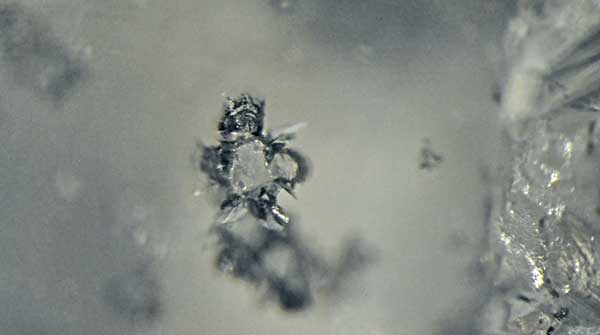Using superdeep diamonds, U of A researchers are taking a glimpse into the mysteries of Gondwana
Researchers at the University of Alberta have tapped into the mystery of the Earth’s ancient supercontinent, Gondwana, using “superdeep” diamonds. The recent study, spearheaded by former Banting postdoctoral scholar Suzette Timmerman, offers unprecedented insight into the evolution of deep plate tectonics.
These diamonds, hailing from depths of up to 700 kilometres within the Earth, act as time capsules, preserving the history of our planet’s deep tectonic shifts. Timmerman and her team meticulously studied tiny radioactive particles within the diamonds to date their formation, tracing them back to the base of Gondwana between 650 million and 450 million years ago.
 Suzette Timmerman |
 Graham Pearson |
“Diamonds are one of the most fascinating research materials because diamonds are chemically inert,” says Timmerman. “There is basically no exchange between the surroundings and what is inside the diamonds.”
“They are perfect time capsules.”
Understanding the formation and migration of these superdeep diamonds offers scientists invaluable information about processes that shape our modern Earth, such as the carbon cycle and carbon sequestration into the mantle.
“Superdeep diamonds give you unique information about the Earth at depths that are simply unobtainable any other way,” says study co-author Graham Pearson, professor in the Department of Earth & Atmospheric Sciences.
“We knew that there was a subduction system surrounding Gondwana, because that brought the continents together,” Pearson said.
“But we didn’t understand what was going on underneath, to what extent it was growing the continent and what processes were at play in keeping it together or growing it apart.”
The study reveals that host rocks bearing the superdeep diamonds became buoyant, transporting these diamonds and subducted mantle material to the base of Gondwana, effectively expanding the supercontinent from below.
These diamonds eventually reached the Earth’s surface about 90 million years ago due to violent volcanic eruptions, specifically in regions that now make up parts of Brazil and Western Africa. Both locations are remnants of Gondwana and key sources of superdeep diamonds.
The study suggests that as Gondwana broke apart to create the continents we recognize today, these diamonds migrated with the varying land masses.
However, Timmerman pointed out there are challenges in studying these diamonds. The inclusions, or impurities, within superdeep diamonds are scarce and hard to detect. The team, she said, spent extensive periods examining the diamonds to find noteworthy material. Collaborative efforts with a larger research team proved essential in gathering enough samples for the study.
“Even minute amounts of material can give us really important information,” Timmerman said.
| Staff
The opinions expressed by our columnists and contributors are theirs alone and do not inherently or expressly reflect the views of our publication.
© Troy Media
Troy Media is an editorial content provider to media outlets and its own hosted community news outlets across Canada.

